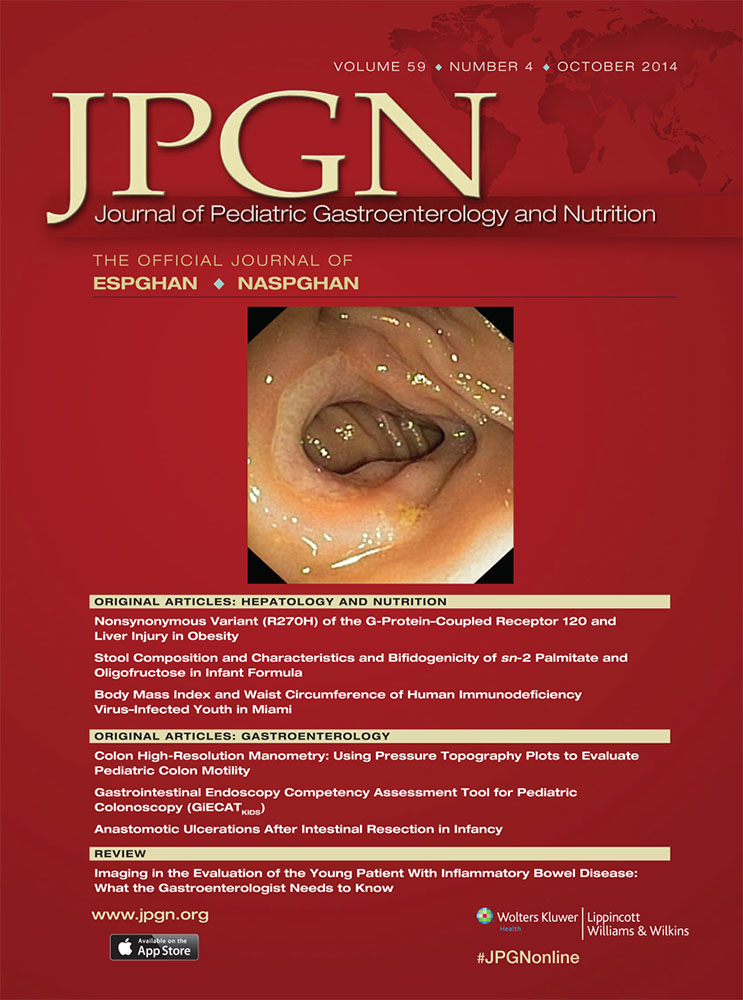Colon High-Resolution Manometry
Using Pressure Topography Plots to Evaluate Pediatric Colon Motility
This article has been developed as a Journal CME Activity by NASPGHAN. Visit: http://www.naspghan.org/wmspage.cfm?parm1=742 to view instructions, documentation, and the complete necessary steps to receive CME credit for reading this article.
M.R.S. has received a research grant from Takeda Pharmaceuticals, and spouse works for Abbott Laboratories. The other authors report no conflicts of interest.
ABSTRACT
Objectives:
Colon manometry is usually performed using the 8-pressure sensor water-perfused manometry system. High-resolution manometry (HRM), using closely spaced solid-state pressure recording sensors, provides more detailed information of gut luminal pressure changes, and, by displaying the HRM data as a pressure topography plot (PTP), helps with data interpretation. Our aim was to compare the colon and rectal luminal pressure data obtained using 8 pressure sensors and displayed as conventional line plot (CLP) with data obtained using a custom-made solid state manometry catheter with 36 pressure recording sensors and displayed as PTP.
Methods:
We evaluated colon manometry patterns during fasting, response to meal, and bisacodyl stimulation in 10 patients with constipation and stool expulsion disorders. The data from 8 pressure sensors were displayed as CLP and data from 36 pressure sensors as PTP. Two gastroenterologists independently interpreted these studies. We calculated variability in interpreting colon, rectal, and anal manometry data.
Results:
Intermode, interobserver, and intraobserver reliability were good to excellent for recognizing colon contraction patterns when data are displayed as PTP compared with when displayed as CLP, whereas the reliability for recognizing anal contractions were poor to excellent.
Conclusions:
Colonic and anal manometry patterns are easily recognized when HRM data are expressed as PTP. Obtaining information of colonic luminal pressure changes with rectum and anal pressure changes using HRM can help better understand the pathophysiology of pediatric constipation and stool expulsion disorders.




